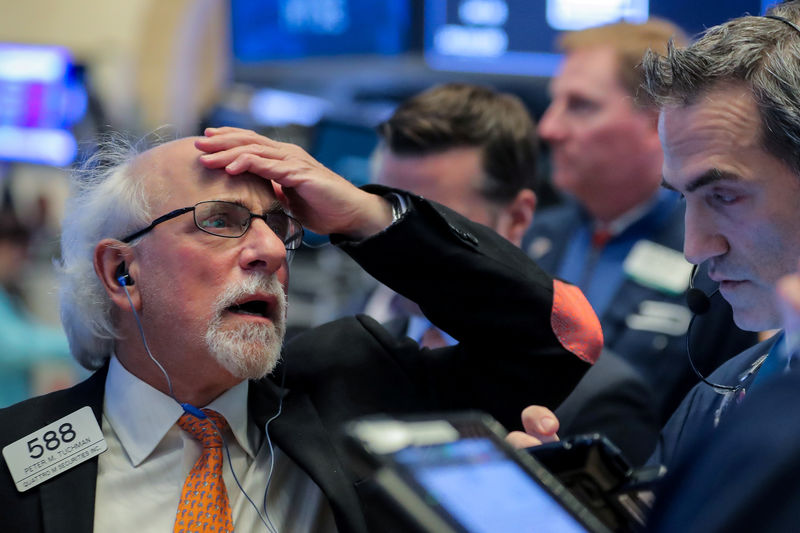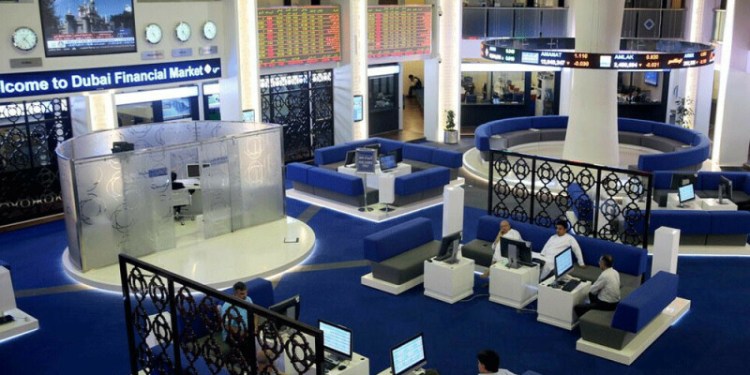 © Reuters. FILE PHOTO: FILE PHOTO: Traders work on the floor of the NYSE in New York
© Reuters. FILE PHOTO: FILE PHOTO: Traders work on the floor of the NYSE in New York(Reuters) – Following are five big themes likely to dominate thinking of investors and traders in the coming week and the Reuters stories related to them.
1/THE (FED) PLOT
The Federal Reserve will be very much in the spotlight in the coming week. Minutes from the Fed’s November meeting will emerge and ten Fed committee members, including Chairman Jerome Powell, will speak at an event on Wednesday. Their speeches will be useful for investors who have been dialing back their expectations for future rate hikes, having noted the cautious tone creeping into policymakers’ comments of late.
Powell himself has mentioned slowing growth abroad as a cause for concern, alongside the diminishing lift from tax cuts, softer housing markets and wobbly corporate credit.
He did not counter expectations of a December rate hike, however, so that remains the base case. But with other FOMC committee members chiming in to warn of headwinds, a real gap is opening up between markets and the Fed over where rates will stand at the end of 2019 and into 2020.
Whereas the FOMC’s median target rate projection for end- 2019 is 3.125 percent, the target rate implied by the January 2020 Fed funds futures contract is 2.75 percent. And that’s down from 2.95 percent two weeks ago.
Futures currently predict no more rate hikes from there, even though the FOMC has penciled in an end-2020 projection of 3.375 percent – a gap of roughly two rate hikes.
– Fed’s Powell: U.S. ‘really strong’ even with housing, other risks
– The economic sugar rush and the Fed: a rate hike quandary
Graphic: Federal Open Market Committee target rate projections – https://tmsnrt.rs/2R7LtS4
Graphic: Diminished expectations – https://tmsnrt.rs/2PKocJk
2/LAST TANGO IN BUENOS AIRES
Trade war skirmishes have been frequent this year between Beijing and Washington, and Asian markets — the innocent bystanders in this conflict — are hoping Presidents Donald Trump and Xi Jinping can negotiate some kind of ceasefire when they meet at the G20 summit in Buenos Aires.
Asian economies are slowing as this tariff war disrupts supply chains; factories from China to Japan and South Korea are reporting weaker orders. Even in Vietnam, a preferred destination for manufacturers seeking to escape the crossfire, business sentiment is off its peak. India, Indonesia and the Philippines, meanwhile, are yet to benefit from the past month’s 25 percent oil price plunge.
Investors are clearly reluctant to hold risky assets before the G20. Pre-summit comments do not suggest a rapprochement is in the offing, but Buenos Aires may be the last chance saloon. If the talks fail, China and Asia will face tougher times.
– APEC fails to live up to its name amid U.S., China acrimony
– Singapore Q3 GDP growth well below f’cast, trade frictions dent outlook
– China’s economic opening-up to help offset U.S. trade frictions-cbank adviser
Graphic: Asia manufacturing: Vietnam stands out – https://tmsnrt.rs/2PMSvzi
3/ TIME TO TLTRO?
Slowing growth, weak business sentiment, political instability – one can hardly imagine a worse time for the European Central Bank to end its 2.6 trillion-euro crisis-era stimulus, but that’s what it plans to do at the end of December.
Euro zone inflation numbers due on Friday may add to the chorus of data suggesting the ECB will have its work cut out as it tries to “normalize” policy. A market gauge of inflation expectations has slipped to one-year lows after business surveys showed slower-than-expected growth in November. Bets on a December 2019 ECB rate rise have eased further.
Investors expect a November inflation reading of 2.1 percent but “core” inflation, stripping out food and energy costs, is seen at 1.3 percent.
Might the ECB offer any relief? One idea that has resurfaced, albeit without any apparent basis, is a potential rerun of another crisis-era measure, the targeted longer-term refinancing operation (TLTRO) which provides multi-year loans to banks.
The ECB’s chief economist has already doused such speculation. But the very possibility of TLTROs being unleashed has helped stoke an Italian bond rally, so markets will scrutinize upcoming speeches by ECB policymakers. Any hints this might be under consideration will undoubtedly create ripples in European markets.
– Euro zone business growth much weaker than expected in November
– ECB rate rise expectations, market inflation gauge tumble after weak PMI
– ECB chief economist dashes hopes of imminent cash injection for banks
Graphic: Inflation expectations – heading to one-year lows – https://tmsnrt.rs/2PS1I9B
4)/BREXIT BATTLE AT HOME
Even if British Prime Minister Theresa May gets her Brexit withdrawal deal with the European Union rubber-stamped by Brussels on Sunday, her battle will be just beginning.
Markets reckon an early-December parliamentary vote on the deal is the real crunch date, and the parliamentary arithmetic looks daunting for the British prime minister. Between now and then, she will have to embark on a charm offensive to win over critics of the deal, from Conservative party colleagues and opposition politicians, to businesses and the public.
A lost vote for the government could spark chaos in financial markets as investors panic that Britain is headed for a disorderly and potentially damaging exit from the EU in March.
Sterling
– EU struggles to agree on Gibraltar before Brexit summit
– Britain agree draft deal on future relations
Graphic: Recent sterling falls small against Brexit vote aftermath – https://tmsnrt.rs/2R5kMhb
5/TECH WRECK
The tech sector’s travails are well known by now, but some of the numbers are still remarkable: the Nasdaq down 15 percent since the start of October; the FANG+TM index in a bear market; up to $1 trillion of ‘FAANG’ stocks market cap lost in under two months, and iPhone maker Apple (NASDAQ:) losing a quarter of its value in a matter of weeks.
The question now is whether tech rebounds, closes the year on a high and drags stock markets back up. The sector has been a leading indicator for the broader market – and to a large extent the economy – on the way down. A bounce would help soothe fears that the U.S. economy really is about to roll over.
But damage has been severe. Most major tech stocks and indices are well below long-term moving averages, an indication of further weakness ahead. Trade wars continue to simmer. Finally, despite all the falls, the sector remains the “most crowded” trade for the 10th month in a row, BAML’s fund manager survey shows.
Graphic: The FAANGs – https://tmsnrt.rs/2POHyxe
Source: Investing.com





























